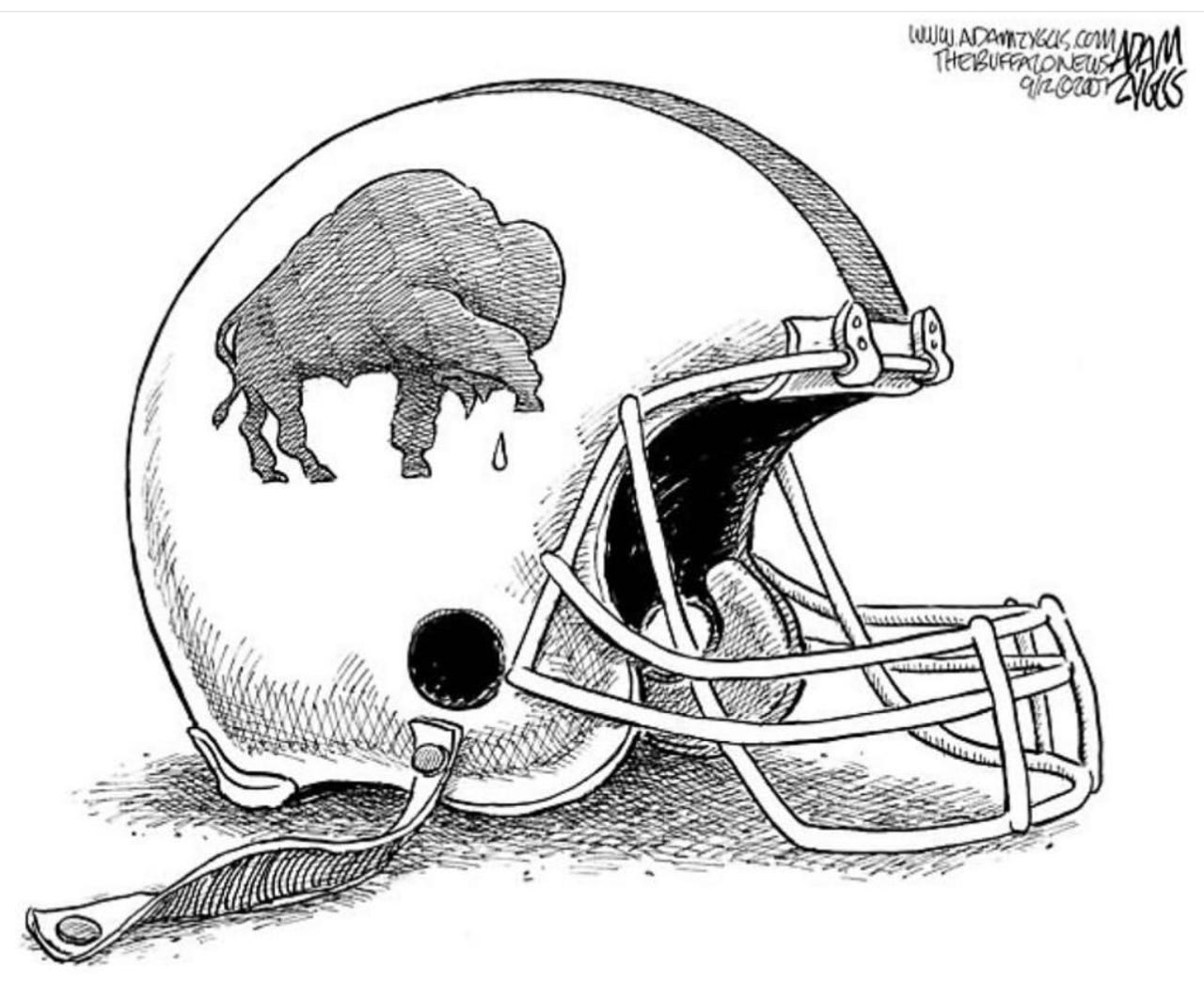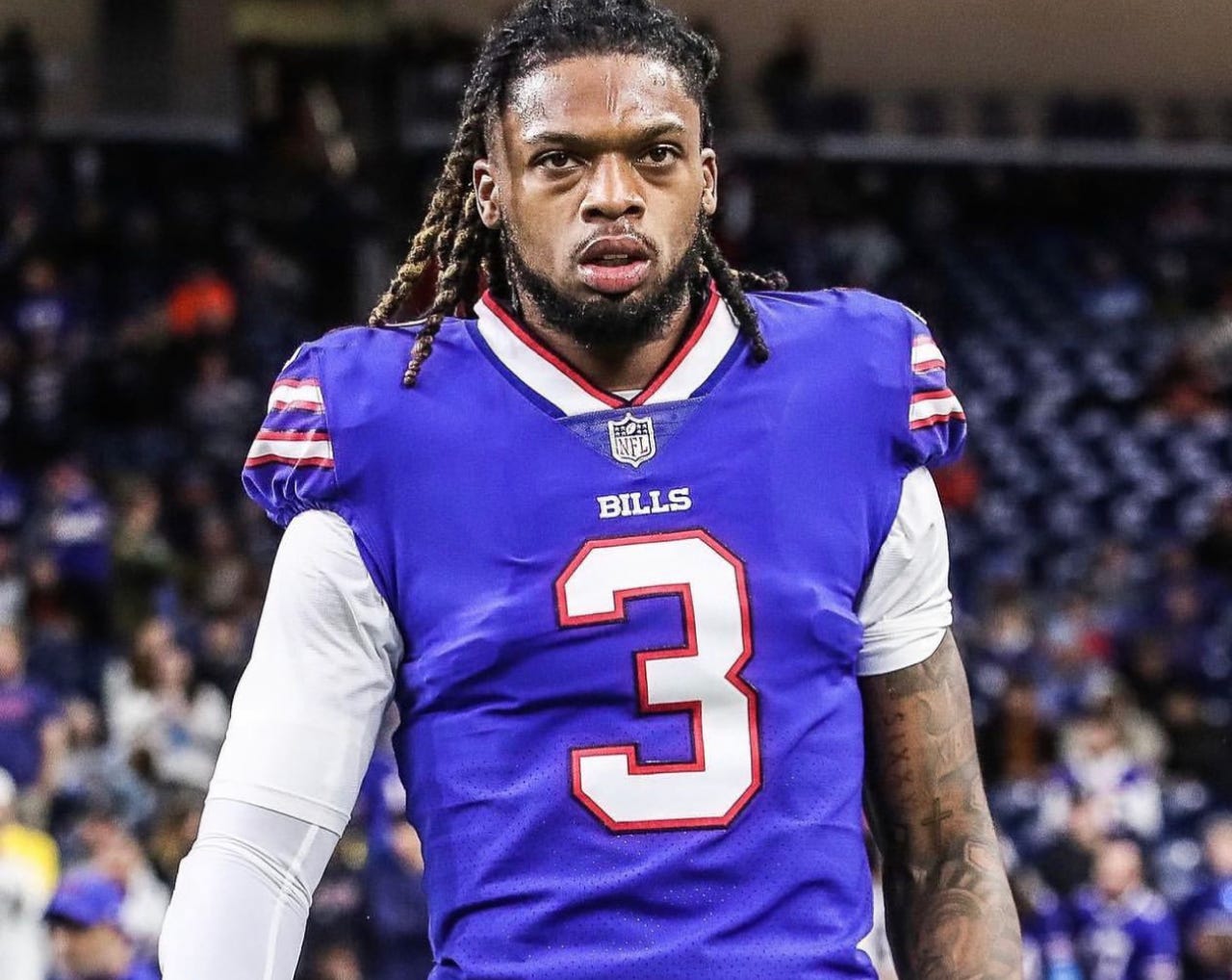Football Is Not Life, Because Life Is Far More Serious
Damar Hamlin was playing a kid's game...and is now fighting for his life
I watched as life and death collided with professional football last night. It was refreshing to see that the recognition of the supremacy of life and death won out over a kid’s game, though the dose of perspective was, and remains, terrifying.
It was supposed to be the Monday Night Football game of the season. The Buffalo Bills (12-3) had traveled to Cincinnati to take on the Bengals (11-4). Two of the best teams in the AFC were still trying to sort out playoff positions, so there was a lot on the line. I had the house to myself, so I was curled up on the couch with Magnus in eager anticipation of a good game. There would soon be popcorn, which I’d have to share with Magnus, who’s a serious popcorn hound.
About halfway through the first quarter and Buffalo up 7-3, Bills safety Damar Hamlin made what appeared to be a routine tackle on Bengals wide receiver Tee Higgins. It was a tackle that happens several times a game- a safety running with a full head of steam hitting a wide receiver moving at high speed. An immovable object meets an irresistible force. A friend who played in the NFL once described the impact as “imagine being in an automobile accident on every play.” That’s what NFL players do, and Hamlin was used to it; that’s what he did as a safety.
After bringing Higgins down, Hamlin stood up, went wobbly, and collapsed. Instantly, players in the vicinity were screaming for help as Bills’ medical personnel rushed out to Hamlin’s side. Yet, all ESPN’s Joe Buck could say was, “And another Bill’s player is down.” Nothing seemed amiss to most observers who weren’t on the field, but to those who were it quickly became apparent that something wasn’t right. Damar Hamlin wasn’t moving.
The sellout crowd at Cincinnati’s Paycor Stadium quickly fell to a stunned murmur. No one knew what had happened, but they could sense it was serious. As players from both teams gathered around, medical personnel cut off Hamlin’s uniform and performed CPR and other life-saving measures for ten minutes. No one outside the players' circle knew what was happening because it was impossible to see anything.
Bills players stood by in shock, some in tears, as they watched one of their teammates being worked on. Bengals players mingled with them, trying to process what they were seeing, as their limited understanding of what they were seeing gave way to sadness and despair. In the NFL, opponents are often friends. Some are former teammates, and some work out together in the off-season, but players in the league form an exclusive fraternity, so there’s a closeness among opposing teams you don’t find in other sports.
After a few more minutes, Hamlin was transported by ambulance to the nearby University of Cincinnati Medical Center, where he remains sedated and in critical condition this morning (I’m writing this just after 9 a.m. PST). Unfortunately, little information is available, perhaps because there isn’t any to share as Damar Hamlin continues to fight for his life. What is known is that Hamlin suffered cardiac arrest after his tackle of Tee Higgins, possibly due to something known as commotio cardis,
ventricular fibrillation precipitated by blunt trauma to the heart. Although it is infrequent, it is an important cause of sudden death in young athletes.
Hamlin, a 24-year-old second-year professional drafted out of the University of Pittsburgh, is living his dream of playing in the National Football League. No one, least of all Hamlin’s family and teammates, gives a damn about football now. If Hamlin survives, he’ll almost certainly never play another down.
No, the concern is for a young man’s life. That’s the only thing that’s of concern to anyone now. He’s getting the best care possible; all anyone can do is hope for the best.
Football players are conditioned to continue games even after the worst of injuries. Ambulances have come onto fields before and hauled players to hospitals, only to have games continue. The show must go on. Next man up. Choose your cliche. It’s what football players do; they compartmentalize the risks they face.
Last night was different, and everyone- players, coaches, broadcasters, and even those of us watching the game on television- knew there was no way the game could continue. The air had gone out of the balloon. We had watched a player die on the field and have his pulse restored through heroic measures. Whether that will ultimately save Damar Hamlin’s life remains to be seen, but it was enough to give him a fighting chance.
Over the past 18 hours, I’ve listened to many ex-players talking about the dangers of football, and I can’t disagree. Football IS a violent and dangerous game, and those who play it know that every time they step on the field, they risk catastrophic injury…or worse. Yet, they take that knowledge and file it away in a place where the fear can’t get to it, and then they do what they train to do. It takes a special person with a unique mindset to do it.
I’m not sure that this is a “football problem” as much as it is a freak injury with a freak cause. If it is indeed commotio cordis, that requires a powerful impact to the chest at a specific point in the cardiac rhythm. Yes, football is a sport with a lot of powerful impacts, but there are also cases of hockey players taking pucks or checks to the checks and suffering something similar. Every sport comes with its subset of serious risks. I left college soccer with seven concussions that I can recall (there may have been more). There have been a few more recently, including a couple over the past decade.
Hamlin’s injury may have occurred at a freakish intersection of the time-space continuum. Perhaps he was hit in exactly the wrong place at precisely the wrong time. Or maybe we’ll never know the “why” of what happened to Damar Hamlin.
Right now, though, none of that matters. It’s all just words. And speculation. Because the only thing that matter is that a 24-year-old man with a bright future in front of him is lying in a hospital bed in Cincinnati, fighting for his life. And the game he’s paid to play seems very small indeed.








By the way, "ventricular fibrillation precipitated by blunt trauma to the heart" is why body armor includes a trauma plate over the hear. The kevlar will stop the bullet from penetrating, but it does little to moderate the blunt force. People wearing bullet-proof vests might survive the gunshot, but they commonly do so with one or more broken ribs.